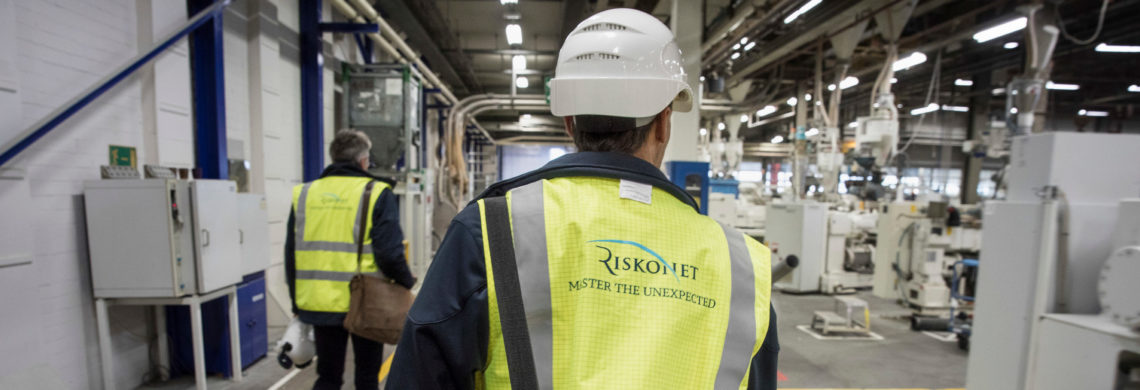Offering seamless risk engineering with business interruption expertise
21 december 2018

Riskonet recognizes the need to provide its global customers with the big picture when it comes to resilience. Any loss prevention project for physical assets would be incomplete without a review of the potential consequential loss. We talked to Caroline Woolley about why it is essential to have a business interruption review at the same time as having a property survey.
Riskonet has partnered with one of leading experts in business interruption risk and insurance – Caroline Woolley of Risk and Forensics Ltd, who is also training and development director at MDD Forensic Accountants.
Why do you think is it so important to spend time reviewing business interruption risk before placing insurance?
“Most companies would not consider buying property damage insurance without having a property survey, including consideration of loss prevention and resilience. However, most companies buy business interruption insurance without having a review. This could be fatal for a business if the insurance is incorrect. It could mean a claim is either impossible or insufficient and could turn an incident into a catastrophe. Property damage Business interruption insurance covers the loss of income and increased costs involved in getting a business back on track and is the cash life line in any major loss. It is the business interruption (BI) insurance that can fund all the mitigating activities and help fund crisis management plans.
Most people have a good handle on property risk, but it is the business interruption element that always creates surprises – and not in a good way. A company will often experience problems with the business interruption part of a claim, either due to under insurance (values incorrect and/or understated), indemnity periods being too short, unwanted exclusions or the insurance just not matching the business.
Business interruption has been the top risk facing companies for the last six years according to the Allianz Risk Barometer. Also, the BI part of a claim now often outweighs the property damage part. In fact, according to Zurich, BI can be three times the size of the property damage element. Such importance is clear, so we want to help businesses get to grips with this complex area of risk and insurance.
It is essential to consider BI risk before a loss occurs. I’d much rather be sitting down calmly discussing BI risk over a cup of tea, rather than while someone is putting out a fire or bailing out water after a flood. Investment in pre-loss work is always beneficial and creates comfort through improved understanding.
The BI insurance should be reviewed to ensure it is fit for purpose, it is on the correct basis and it is sufficient to provide that much needed lifeline cash.”
Insurance is often an afterthought in business continuity planning too – what improvements can be made?
“Just as property surveys go hand in hand with business interruption reviews, they also need to link to business continuity planning (BCP). The BCP exercise is often theoretical (rather than drawing on the real claims experiences of others) and is regularly isolated from insurance considerations. Where a major incident is (or can be) insured, the Insurance policy should form part of the BCP testing. The lifeline cash from insurance should match the requirements set out in the BCP, where possible, otherwise alternative funding will be required. Such information is vital for insurers too. Any detail that can create some certainty in an unforeseeable loss will help avoid unwanted surprises.”
There is sometimes some confusion over what is meant by business interruption insurance, why is that the case?
“If you say the words ‘business interruption insurance’ to anyone in the insurance industry, they will automatically assume you mean property damage BI. Anyone outside the industry will probably think of insurance for ‘anything that interrupts business’. The events that can cause an interruption to business go way beyond damage to property. The potential worst loss scenario for businesses is rapidly changing from property damage to a major cyber event. Distinctions must be made to avoid any confusion and to manage expectations. Property damage BI is a great place to start, and a BI review for physical assets can then later be used for other BI triggers too.”
The way forward
According to Caroline Woolley, a company needs to go through a basic process of understanding risk, in terms of both cause and effect, before making any decisions on insurance or other solutions. This includes how the business makes money, quantification of exposures and expected losses (medium, large or catastrophic) and the risks it faces directly and indirectly, itself and from the industry and community in which it operates. The idea is for risk management and insurance to meet these varying needs; cover these diverse risks; and help businesses survive any major loss. The starting point is to make sure all stakeholders are comfortable with both the physical damage and the resulting business interruption risk and how cover is provided by existing insurance. Boundaries need to be clear, and a better understanding of BI is required. Caroline Woolley: “I look forward to working with Riskonet and it’s customers in this quest for improvement of BI understanding and knowledge”.





